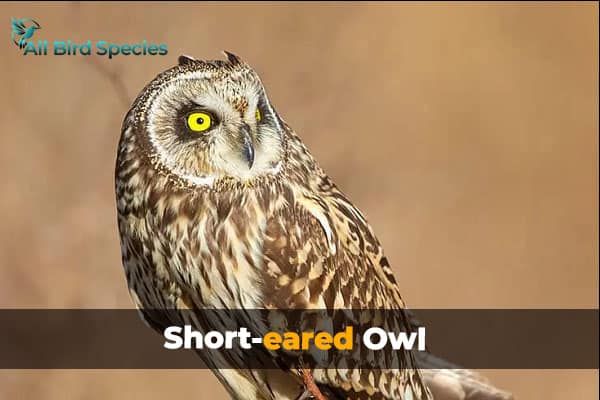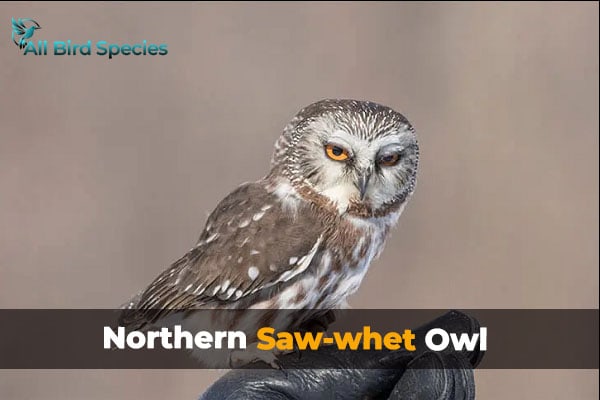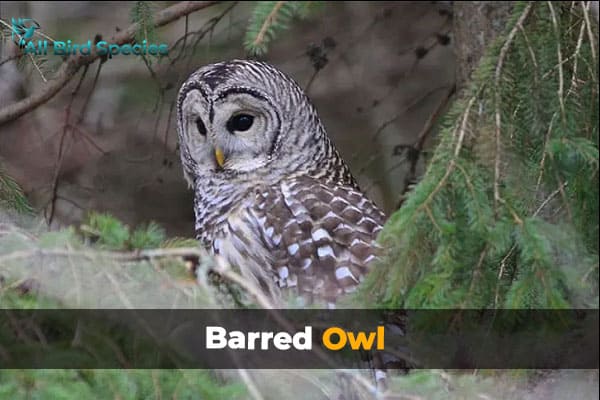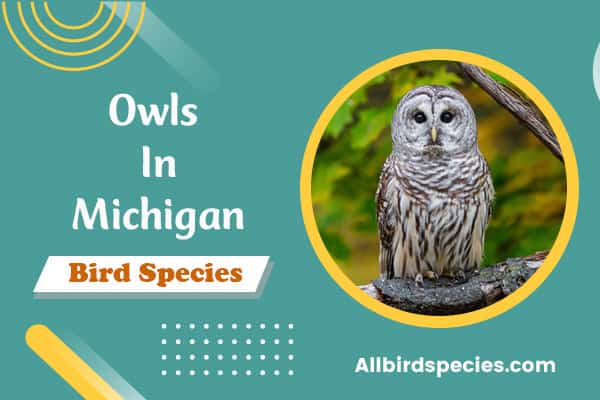9 Types of Owls in Michigan (With Pictures)
Did you know Michigan is home to over 300 bird species, including 11 types of owls? This makes our state a top spot for bird lovers and owl fans. Owls in Michigan add a magical touch to our bird world. They also show why it’s crucial to protect their homes.
We’ll look at the different owls in Michigan, each with its own traits and ways. Whether you’re a pro at bird watching or just starting to love nature, learning about these birds is exciting. Let’s dive into the world of Michigan owls and see why they make our birding adventures special!
Types of Owls Found in Michigan
- Great Horned Owl
- Barn Owl
- Long-Eared Owl
- Short-Eared Owl
- Northern Saw-Whet Owl
- Barred Owl
- Eastern Screech Owl
- Snowy Owl
- Great Gray Owl
What Do Owls look like in Michigan?
In Michigan, you can find a variety of owl species, each with its own distinctive appearance. The Eastern Screech Owl, for example, is small and has a mottled gray or red-brown plumage with ear tufts. The Great Horned Owl, one of the largest in the state, is easily recognizable by its large size, prominent ear tufts, and a mix of mottled brown and white feathers. The Barn Owl, with its heart-shaped face and pale, golden-buff feathers, is another species found in Michigan. Each owl species contributes uniquely to Michigan’s diverse avian population, showcasing a range of sizes, colors, and markings.
1. Great Horned Owl
- Scientific name – Bubo virginianus
- Lifespan – 28 (maximum recorded)
- Size – 17 – 25 in
- Weight – 2.6 – 3.5 lb
- Wingspan – 3 – 5 ft
The Great Horned Owl, known as Bubo virginianus, is a fascinating bird that captures the interest of many. It is known for its large size and ability to live in different places. Let’s learn about its unique traits, where it lives, and what it eats.

Identification and Characteristics
To identify a Great Horned Owl, look for these features:
- Size: They are among the biggest owls in North America, 18 to 25 inches long.
- Ear Tufts: Their big ear tufts help tell them apart from other owls.
- Coloration: Their feathers are a mix of brown, gray, and white, helping them blend in with trees.
- Eyes: They have large yellow eyes perfect for seeing in the dark.
Habitat and Range
The Great Horned Owl lives in many places, showing how adaptable it is. You can find them in:
- Wooded areas with lots of leaves
- Open fields or grasslands
- Urban areas like parks and big gardens
This owl lives all over North America, from Canada to the southern U.S. It’s one of the most common owls in the continent.
Diet and Foraging Habits
The Great Horned Owl eats a wide variety of things, showing its hunting skills. They hunt:
- Mammals: They go after rabbits, squirrels, and skunks.
- Birds: They eat smaller owls and songbirds too.
- Reptiles: Sometimes, they eat reptiles and amphibians.
They hunt at night and have strong talons, making them great predators. The Great Horned Owl can live in many places, showing how tough they are.
2. Barn Owl
- Scientific name – Tyto alba
- Lifespan – 25 years (captivity: maximum recorded)
- Size – 13 -15 in
- Weight – 8 – 25 oz
- Wingspan – 31 – 37 in
The Barn Owl, scientifically known as Tyto alba, is a standout in Michigan’s owl world. They have heart-shaped faces and pale, mottled feathers. These features make them a favorite among bird lovers and nature fans. Learning about their looks, where they live, and how they hunt helps us appreciate them more.

Identification and Characteristics
Barn Owls are easy to spot because of their unique look. Their face is shaped like a heart, which helps them hear better in the dark. Their feathers are white, brown, and gray, blending in with their surroundings. Adults are 12 to 15 inches long and have a wingspan of 36 to 43 inches, making them big owls in Michigan.
Habitat and Range
In Michigan, you can find Barn Owls in fields, woodlands, and old buildings. They love open areas for hunting small mammals like mice. Their homes often have tall grass and a few trees, perfect for hiding and hunting.
Diet and Foraging Habits
Barn Owls eat mostly small rodents, sometimes insects or small birds. They hunt at night, using their sharp hearing to find food. Their hunting skills help control pests in Michigan’s farms.
3. Long-Eared Owl
- Scientific name – Asio otus
- Lifespan – 12 years (maximum recorded)
- Size – 14 – 16 in
- Weight – 7.8 – 5.3 oz
- Wingspan – 35 – 39 in
The Long-Eared Owl, or Asio otus, is a fascinating creature known to many owl lovers. Its long ear tufts make it stand out, and it can hide well in the wild. Watching these owls at night is especially rewarding.

Identification and Characteristics
The Long-Eared Owl has a brown and gray coat that helps it blend into the woods. Its ear tufts can move up or down, showing its mood. These owls are medium-sized with big, bright yellow eyes. Their unique face and feathers help them hunt by locating sounds.
Habitat and Range
These owls like places with lots of plants, like forests, woodlands, and even cities with lots of trees. In Michigan, they’re often near wetlands and farms because of the food. They move around more in the cold months to find food and places to nest.
4. Short-Eared Owl
- Scientific name – Asio flammeus
- Lifespan – 4 years
- Size – 13 – 17 in
- Weight – 7.3 – 16.8 oz
- Wingspan – 33 – 40 in
The Short-Eared Owl, known scientifically as Asio flammeus, is a bird with unique traits. It lives in open fields and grasslands. It hunts using its sharp hearing and eyesight to catch small mammals. Their calls across the landscape show where they live and claim their territory.

Identification and Characteristics
To spot a Short-Eared Owl, look for its special features. It has a round head and ear tufts that might not always be seen. Its feathers are light and dark brown, with bright yellow eyes that seem to stare right through you. When flying, notice its long wings and short, squared-off tail. This owl can adapt to different environments.
Habitat and Range
Short-Eared Owls live in open areas with lots of grass and low plants. They are found in North America, helping their numbers stay strong. They nest on the ground, which is rare for owls. This makes their nests safer but also puts them at risk from predators.
| Characteristic | Details |
|---|---|
| Scientific Name | Asio flammeus |
| Wingspan | 35-43 inches |
| Weight | 10-18 ounces |
| Coloration | Brown and white with dark streaks |
| Nesting Habit | Ground nesting |
| Primary Diet | Small mammals, particularly rodents |
| Behavior | Active during twilight and at night |
5. Northern Saw-Whet Owl
- Scientific name – Aegolius acadicus
- Lifespan – 7 years (wild); 16 years (captivity)
- Size – 7 – 9 in
- Weight – 2.2 – 5.4 oz
- Wingspan – 17 – 22 in
The Northern Saw-Whet Owl, known as Aegolius acadicus, is a small, charming bird that catches our eye. It stands out from bigger owls with its unique traits. We’ll look into its identification, where it lives, and its special sounds that make it interesting for bird lovers.

Identification and Characteristics
This owl is small, about 7 to 8 inches tall. It has a round face, big eyes, and streaked feathers. Its belly is white with dark streaks, and its back is a mix of brown and gray.
Habitat and Range
It loves dense forests with lots of cedar or spruce trees. In Michigan, these owls live here all year but move for food in winter.
Knowing where the Northern Saw-Whet Owl lives and how it acts is key for protecting it. Human actions can change their homes.
| Feature | Description |
|---|---|
| Size | 7-8 inches tall |
| Weight | 3-8 ounces |
| Wingspan | 18-22 inches |
| Habitat | Dense coniferous forests |
| Vocalization | Distinctive “saw-whet” call |
6. Barred Owl
- Scientific name – Strix varia
- Lifespan – 24 years (oldest recorded)
- Size – 16 – 25 in
- Weight – 17 – 35 oz
- Wingspan – 38 -49 in
The Barred Owl, known as Strix varia, stands out in Michigan’s woods. Its unique look and few look-alikes make spotting it exciting for bird lovers and nature fans. Let’s dive into their special traits, where they live, and how they act within owl ecology.

Identification and Characteristics
Identifying the Barred Owl is easy with its round face and dark eyes, giving it a wise look. It has brown and white feathers with horizontal bars on the chest. The rest of its feathers have mottled patterns. Their hooting sounds like “Who cooks for you? Who cooks for you all?” and can be heard in forests at dusk and dawn.
Habitat and Range
The Barred Owl lives in various places like dense forests, swamps, and wooded areas near water. They nest in tree holes or old nests of bigger birds. Found across much of North America, including Michigan, they like places with lots of food. Their diet mainly includes small mammals, birds, and amphibians, making them skilled hunters.
Owls in Other Regions:
Owls in Michigan: Seasonal Trends
In Michigan, owls show interesting seasonal trends. These trends reflect their unique behaviors and where they live. Some owls stay in Michigan all year, while others migrate to find food or better living conditions.
The Great Horned Owl stays in Michigan all year. It lives in forests, fields, and even cities. But the Short-Eared Owl migrates, coming in fall and leaving in spring. They come for the food, so we see more of them in these months.
- A great time to spot resident owls is during the silent nights of winter when their calls fill the air.
- During spring, we may observe migratory owls as they pass through habitats seeking breeding grounds.
- Summer months may see a decline in owl sightings, as many species prefer to remain hidden while raising their young.
Learning about Michigan owls’ seasonal trends helps us value our local ecosystems. The seasons change their homes, behavior, food, and how they interact with other animals. Each season gives us a chance to see these amazing birds in different ways.







